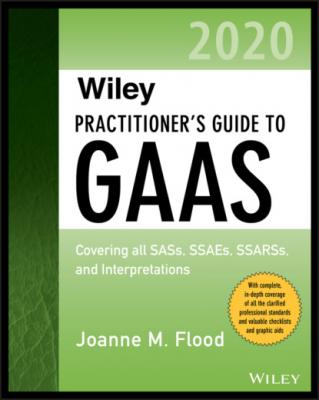or seldom-used accountsMade by individuals who typically do not make journal entriesRecorded at the end of the reporting period or as postclosing entriesHaving few or no explanations or account numbersContaining round numbers or a consistent ending numberThe nature and complexity of the accounts. Examples include accounts that:Contain transactions that are complex or unusual in natureContain significant estimates or period-end adjustmentsHave been prone to errors in the pastCannot be reconciled on a timely basis or that contain significant unreconciled differencesContain intercompany transactionsAre otherwise associated with an identified risk of material misstatement due to fraudContain journal entries or other adjustments processed outside the normal course of business
|
|
|
A.
|
Ask individuals involved in the financial reporting process, including IT personnel (if appropriate), about the presence or observations of inappropriate or unusual activity relating to the processing of journal entries or other adjustments.
|
|
|
|
A.
|
Document the following:The journal entries and adjustments selected for testingThe nature and purpose of the journal entry or adjustmentWhether the journal entries and adjustments were properly approvedA conclusion regarding the propriety of the journal entries and adjustments tested
|
|
|
|
|
Retrospective Review of Estimates
|
|
|
|
B.
|
Identify and document:Accounting estimates that are significant to the financial statementsFor each significant estimate, the key underlying assumptions made by management
|
|
|
|
B.
|
For the prior reporting period, compare the key assumptions made by management at the time the financial statements were prepared to actual events, management actions, or results obtained subsequent to that time.
|
|
|
|
B.
|
Determine whether the results of your procedures indicate a bias on the part of management that may affect the financial statements. If no bias is detected, document this conclusion.
|
|
|
|
|
Significant Unusual Transactions
|
|
|
|
C.
|
Identify and document significant unusual transactions entered into during the reporting period. Consider documenting:The counterparty(ies) to the transactionHow the transaction was accounted, presented, and disclosed in the financial statementsThe process followed by the entity to approve the transaction and its accounting treatmentManagement’s stated business rationale for the transaction
|
|
|
|
C.
|
Determine and document whether management’s rationale for the transaction (or lack thereof) suggests that the transaction may have been entered into to engage in fraudulent financial reporting or conceal a misappropriation of assets. In making your determination, consider whether:The form of such transactions is overly complex.Management has discussed the nature of an accounting for such transactions with ABC Co., the audit committee, or board of directors.Management is placing more emphasis on the need for a particular accounting treatment than on the underlying economics of the transaction.Transactions that involve unconsolidated related parties have been properly reviewed and approved by the audit committee or board of directors.The transactions involve previously unidentifiable related parties or parties that do not have the substance or the financial strength to support the transaction without assistance from the entity under the audit
|
|
|
|
|
CONCLUSION
We have performed procedures sufficient to achieve the stated audit objective, and the results of these procedures are adequately presented in the accompanying workpapers. (If you are unable to conclude on the objective, prepare a memo documenting your reason.)
|
|
|
Notes
1 1 https://home.kpmg/xx/en/home/insights/2016/05/globalprofiles-of-the-fraudster.html.
2 2 https:www.sec.gov/litigation/admin/2016/33-10068.pdf.
3 3 https:www.sec.gov/news/pressrelease/2016-74.html.
4 4 Fraud that involves senior management or fraud that causes a material misstatement of the financial statements should be reported directly to those charged with governance.
5 5 Management incentive plans may be contingent upon achieving targets relating only to certain accounts or selected activities of the entity, even though the related accounts or activities may not be material to the entity as a whole.
